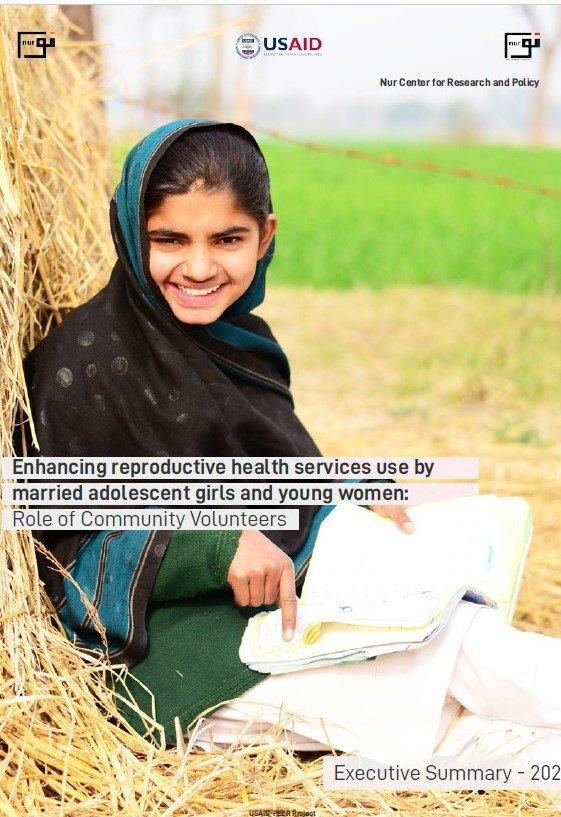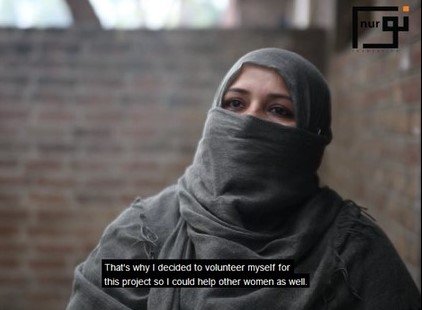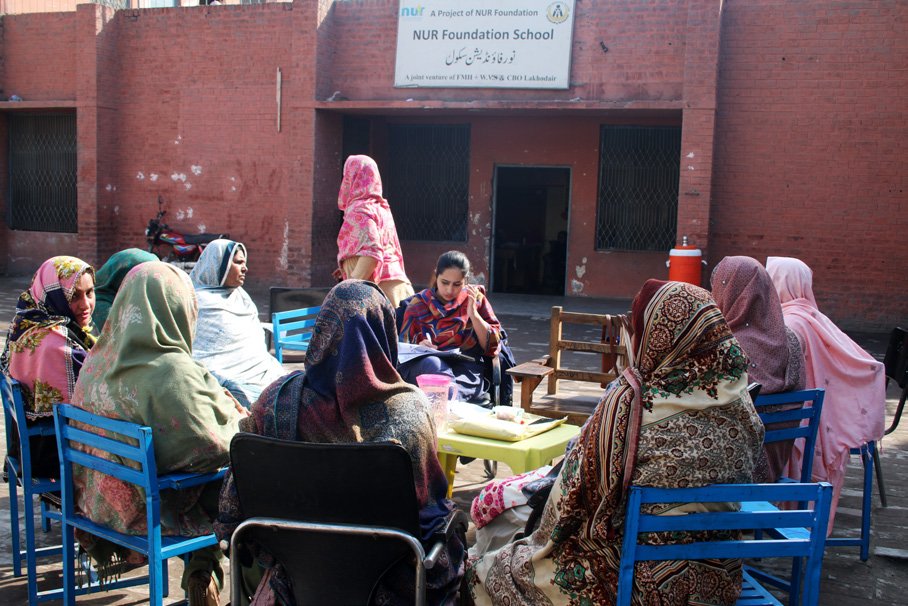Cycle 7 (2018 Deadline)
Enhancing reproductive health services use by married adolescent girls - role of women volunteers
PI: Tasleem Akhtar (tasleem.akhtar@gmail.com), NUR Center for Research and Policy (NCRP), Pakistan
U.S. Partners: Adnan A. Hyder, George Washington University, and John Sandberg, George Washington University
Project dates: January 2019 - September 2021
Project Overview
 | | Photo credits: NUR Center for Research and Policy (NCRP), Pakistan |  | | Video feature highlighting PEER project participants' feedback. |  | | Photo credit: Dr. Akhtar, NUR Center for Research and Policy (NCRP), Pakistan |
Despite being a priority area in the policies of all governments since the 1960s, population growth control remains a challenge for Pakistan’s government. Since the early 1990s, Primary Health Care (PHC), Family Planning and Reproductive Health (FPRH), and Maternal Newborn and Child Health (MNCH) services strengthening and coverage expansion have been areas of special focus. In Punjab, many initiatives have been taken in recent years to strengthen PHC and its FPRH and MNCH components and enhance their coverage. Despite these efforts, Millennium Development Goals (MDGs) have been missed, the country’s commitment to increase Contraceptive Prevalence Rate (CPR) to 50 by 2020 has not been fulfilled, and FPRH indicators are improving sluggishly. FPRH related Sustainable Development Goals (SDGs) are unlikely to be achieved if the current situation doesn’t improve.
Evidence suggests that: a) critical shortage of Human Resources for Health (HRH), b) continuing low investments in PHC, c) Pakistan’s demographic youth bulge, d) the resulting increasing proportion of adolescent girls and young women keeping birth rates high, and e) women’s low utilization of FPRH services are barriers in the way to fulfilling the country’s FPRH goals and international commitments. The many tasks assigned to Lady Health Workers (LHWs), who are the main providers of PHC and FPRH services for the poor and marginalized communities, hinder them from performing their primary duties, and prevent programs like Integrated Maternal, Neonatal, Child Health and Nutrition (IRMNCH&N) from fully achieving their goals and objectives.
On the other hand, the increasing proportion of the highly marginalized married adolescent girls and young women population which currently constitutes 20% of married women of child bearing age, demands special attention. The CPR among this group is half that of all women of child bearing age. If special focus is not brought on to the FPRH needs of this age group in programs like IRMNCH&N, Pakistan and the Punjab province are unlikely to achieve national goals and realize the many international commitments the country has made.
This research study originally aimed at testing the effectiveness of Community Women Volunteers (CWVs) in enhancing the utilization of LHW-provided FPRH services by married adolescent girls and young women aged 15- 25 years, with the following original objectives: (1) increasing access of LHWs to young women for the provision of FPRH services; (2) pursuing solution-testing research to inform policies and implementation of the IRMNCH&N program; (3) promoting community mobilization to address gaps in family planning and reproductive health awareness; and (4) increasing inter-sectoral collaboration
Final Summary of Project Activities
Although the study intervention-testing could not be completed due to the COVID-19 pandemic, useful data was collected through the baseline survey of the study during the pre-pandemic period, which included - 24 Focus Group Discussions with 145 community groups participants
- Baseline survey of 5000 married adolescent girls and young women in the age range of 15 to 24 years before the pandemic lockdowns and after the lifting of lockdowns
- Survey of 500 Community Women Volunteers (CWVs) who had been recruited by Lady Health Workers (LHWs) for the project
- Interviews with 201 Lady Health Workers participating in the study and their 14 Lady Health Supervisors (LHSs)
While the original objective of experimentally testing the effectiveness of the Community Women Volunteers (CWVs) in enhancing the FPRH knowledge and practices of married young women and increasing their use of contraceptives was not achieved, the project team was able to collect a large observational data set on the community perceptions of FPRH needs of married adolescent girls and young women, the FPRH knowledge and practices, and utilization of services by this age group of women, the potential of CWVs in providing support and facilitation to LHWs in reaching out to the community and creating awareness about the FPRH services the LHWs provide and the views of LHWs and their supervisors on the contribution of volunteers and the acceptability of volunteers..
The overall findings indicated that knowledge of FPRH was significantly lacking in all sectors of society and the resources that were available to communities were underutilized as a result. Furthermore, cultural norms dictated that families controlled FPRH knowledge and resources and would access was not allowed until the birth of at least two children, with couples expected to have three or four children as an ideal. In contrast, findings indicated that community women volunteers were available to provide support to LHWs in their work, create awareness in the community about the FPRH services they provide, facilitate their access to marginalized population, and convey counselling messages to those who are difficult to access by LHWs. Respect for LHWs and admiration for the work they were doing was the motivating factor for most of the volunteers who were recruited by the LHWs, but at the same time primary care and LHW provided FPRH services were bypassed for the more expensive doctors’ secondary and tertiary care services even by the economically challenged families. The Nur Centre for Research and Policy issued four reports on various aspects of the project.
Back to PEER Cycle 7 Grant Recipients
|






